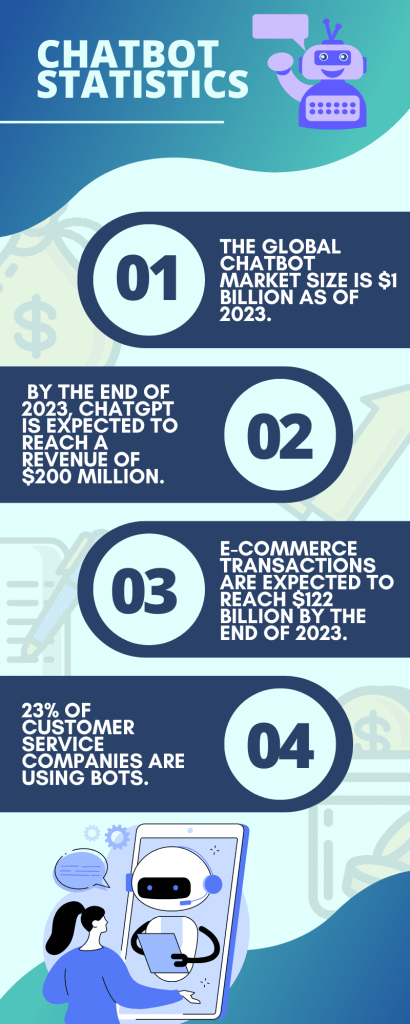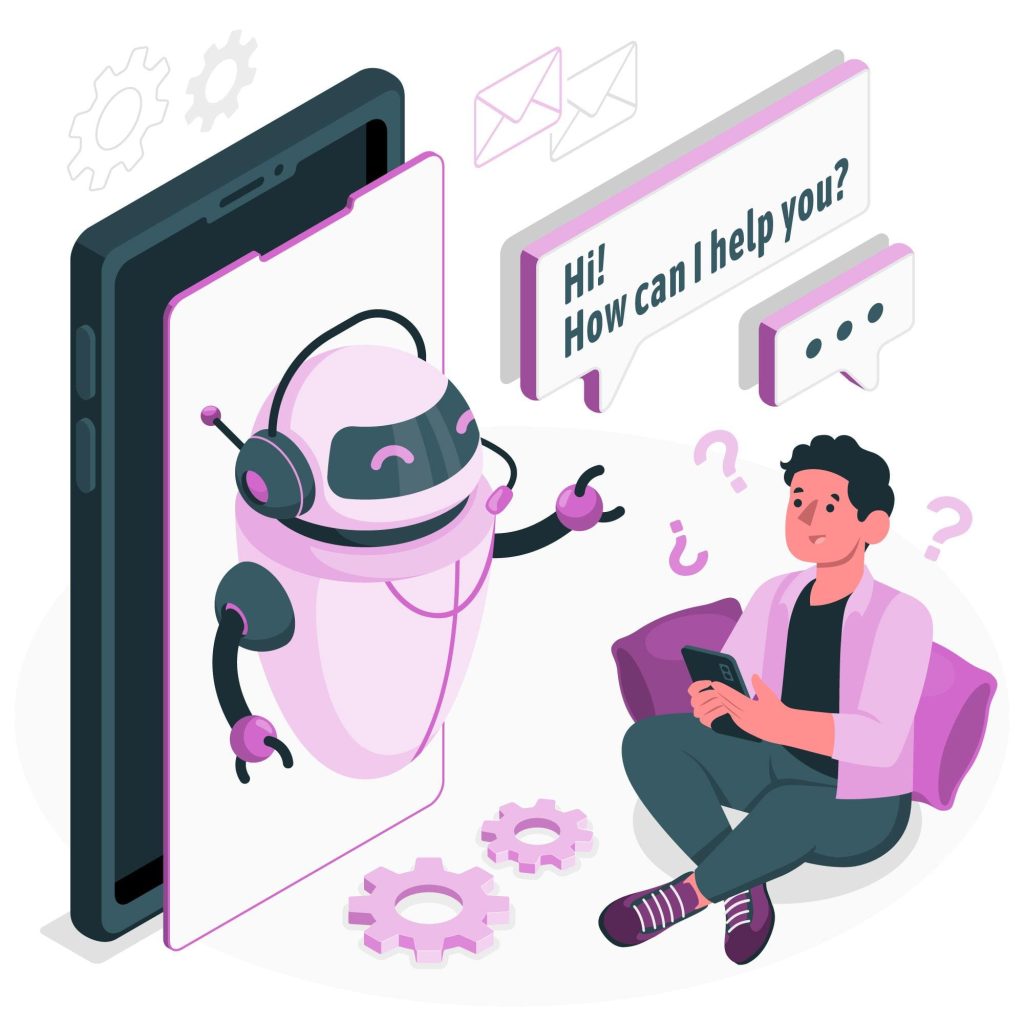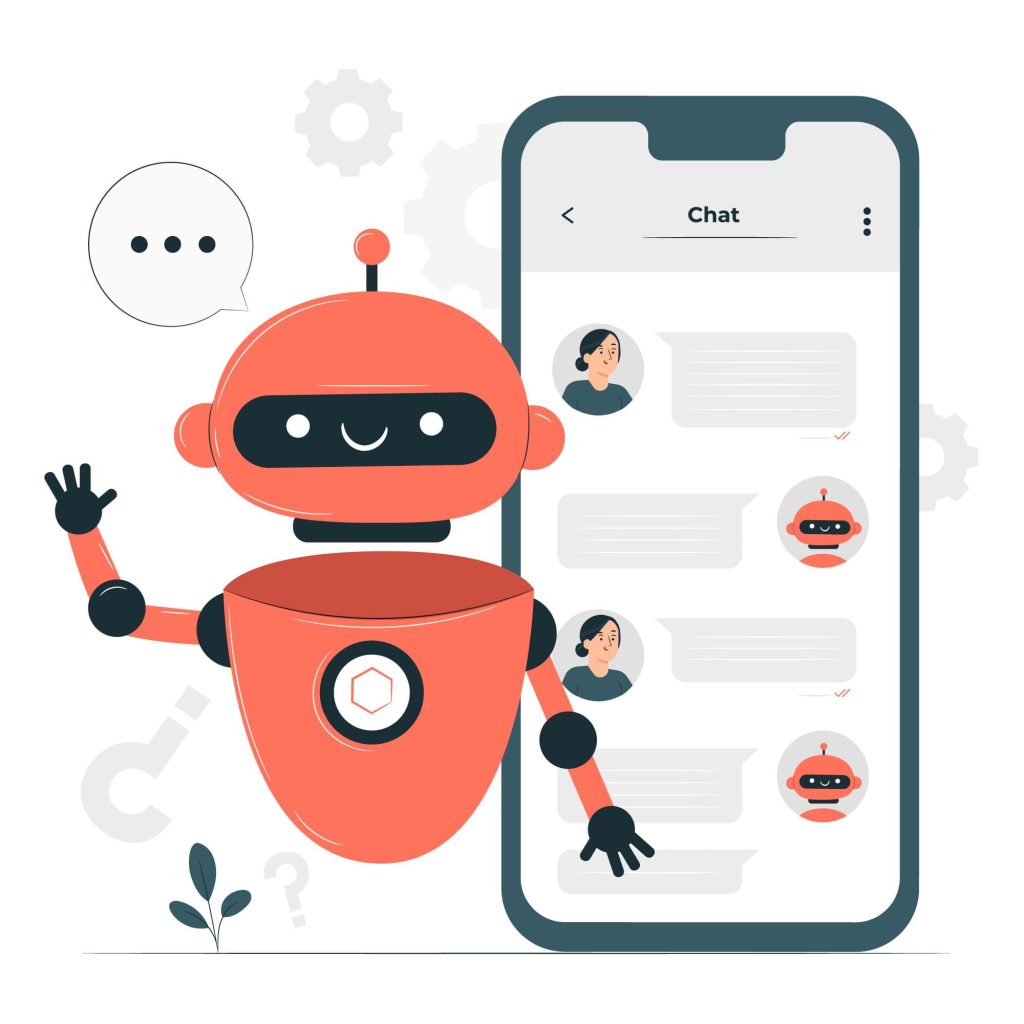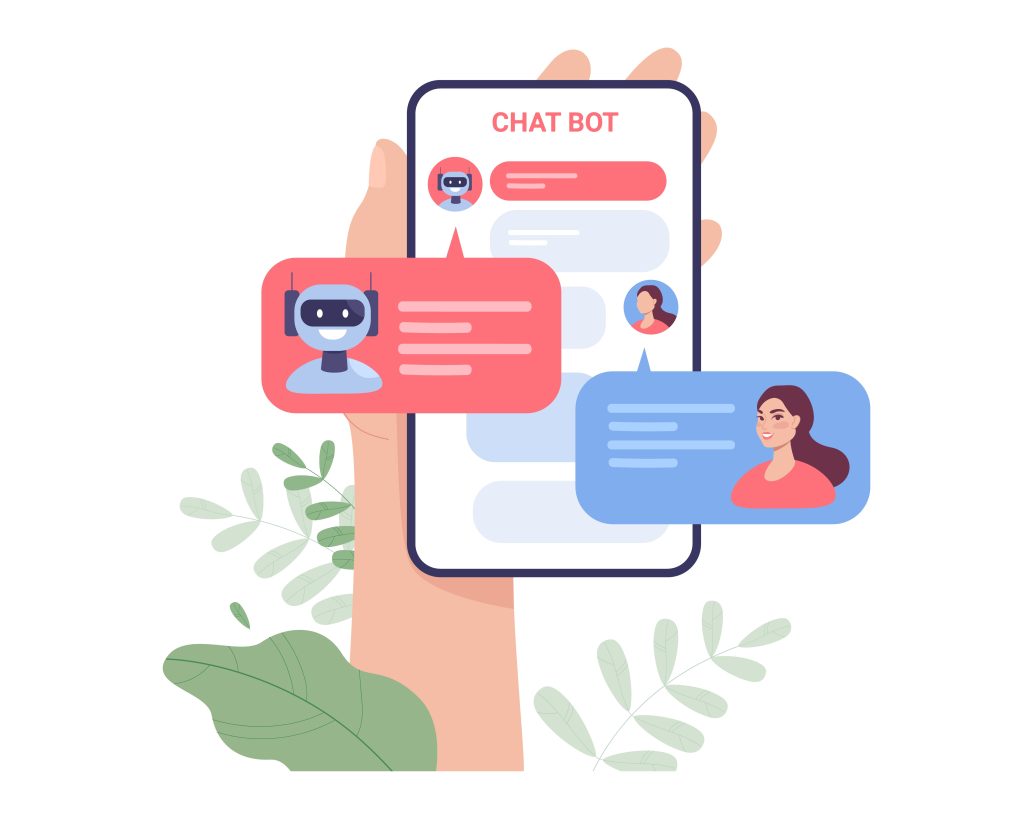We always discuss the future of AI. But AI is at present. The latest example of it is ChatGPT. ChatGPT chatbot is trending everywhere.
Chatbots have become a popular tool for businesses and organizations to interact with customers and provide information.
Everyone is using chatbots knowingly or unknowingly. While using chatbots, it is important to know the statistics of the chatbots.
Here we have compiled all the top research about chatbot statistics. To learn about chatbot statistics, please go through our article.
Chatbot Statistics: Top Picks (2024)

- The global chatbot market size is $1 billion as of 2023.
- 32% of people primarily view chatbots as a solution for getting answers.
- ASAPP ($380 million) was the most funded chatbot AI in 2022.
- 66% of millennials think that 24-hour service is the most important benefit of the chatbot.
- By the end of 2023, ChatGPT is expected to reach a revenue of $200 million.
- Microsoft invested $1 billion in ChatGPT.
- The global chatbot market size is predicted to grow at a CAGR of 19.29% from 2022 to 2032.
- Chatbots are used in 17% of marketing.
- E-commerce transactions are expected to reach $122 billion by the end of 2023.
- Chatbot adoption in retail, banking, and healthcare sectors can see cost savings of $11 billion by the end of 2023.
- Chatbots can save 2.5 billion hours in businesses.
- 23% of customer service companies are using bots.
- 8 out of 10 companies agreed that they have conversational marketing solutions.
- 19% of companies don’t want to use chatbots at all.
- 10% of customers are not satisfied with chatbots.
General Chatbot Statistics
- 42% of people want an immediate response from chatbots. 36% of people want a response within 5 minutes or less.
- 32% of people primarily view chatbots as a solution for getting answers.
Here is a table showing the reasons why people use chatbots.
| Why people use chatbots | Share of respondents |
| Answering the questions | 32% |
| Getting detailed answers or explanations | 29% |
| Resolving a complaint or problem | 27% |
| Receiving customer service | 27% |
| Paying a bill | 23% |
| Making a reservation (e.g. restaurant or hotel) | 22% |
| Scheduling a meeting | 19% |
| Communicating with brands | 19% |
| Adding yourself to a mailing list or news service | 18% |
| Purchasing an item | 17% |
| Getting ideas and inspiration | 10% |
- ASAPP ($380 million) was the most funded chatbot AI in 2022.
Here is a table showing leading chatbot AI startups worldwide by funding raised in 2023.
| Chatbot AI Startup | Funding |
| ASAPP | 380 million |
| Observe.ai | 214 million |
| Ada | 191 million |
| Cresta | 157.1 million |
| Woeboth Health | 123.3 million |
| Forethought | 92 million |
| Kasisto | 81 million |
| PolyAI | 68 million |
| Balto | 52 million |
| Ushur | 42 million |
- 71% of customers want to use chatbots for checking order status.
Here is a table showing customers’ preferences for solving problems by humans or chatbots.
| Problem to solve it | By Humans | By Chatbots |
| Checking order status | 29% | 71% |
| Searching for products | 33% | 67% |
| Getting information about deals and discounts | 38% | 62% |
| Ordering food | 41% | 59% |
| Booking a meeting | 42% | 58% |
| Leaving contact details | 42% | 58% |
| Making a payment | 46% | 54% |
| Returning a product | 54% | 46% |
| Troubleshooting | 60% | 40% |
| Complaining about a service or a product | 72% | 28% |
- 66% of millennials think that 24-hour service is the most important benefit of the chatbot.
Here is a table showing chatbots’ top benefits for millennials and baby boomers.
| Benefits | Responded millennials | Responded Baby Boomers |
| 24 hours service | 66% | 58% |
| Getting an instant response | 51% | 61% |
| Answers to simple questions | 52% | 64% |
| Easy communication | 48% | 52% |
| Complaints resolved quickly | 38% | 46% |
| A good customer experience | 45% | 38% |
| Detailed/expert answers | 37% | 36% |
| Answers to complex questions | 33% | 38% |
| Friendliness and approachability | 33% | 29% |
| None of these | 5% | 13% |
Source: Statista, Salesforce, Tidio, Chatbotsmagazine,
ChatGPT Statistics
ChatGPT is a chatbot that answers all your question without emotion. ChapGPT even can write a poem for you. Recently ChatGPT has been a significantly trending topic worldwide. Everyone is talking about it.
Here we have gathered some important statistics on CHatGPT. To learn more about ChatGPT, scroll down.
- By the end of 2023, ChatGPT is expected to reach a revenue of $200 million.
- The revenue of OpenAI is expected to reach $1 billion in 2024.
- OpenAI receives 300 million visitors monthly.
- 48.98% of the traffic of OpenAI comes from the direct link, and 43.63% of the traffic comes from searches.
- ChatGPT launched a pricing plan on 21st January 2023. The professional plan will cost $42 per month.
- The cost of running ChatGPT is $100,000 per day.
- Microsoft invested $1 billion in ChatGPT.
- ChatGPT has been used by more than 500 million people globally.
- ChatGPT has 96,000,000 visitors monthly.
- ChatGPT receives 10 million queries daily.
- Three hundred billion words were fed into the ChatGPT system.
- ChatGPT’s accuracy rate is close to 90%.
ChatGPT is banned in some countries due to security reasons. Here is a list of those countries.
- Russia
- China
- Iran
- Ukraine
- Venezuela
- Belarus
- Afghanistan
- ChatGPT is on top to receive 1 million users in the minimum number of days.
Here is a table showing the number of days to reach 1 million users on selected platforms.
| Rank | Platform | Time to 1 million users |
| 1. | ChatGPT | 5 days |
| 2. | 10 days | |
| 3. | 60 days | |
| 4. | Spotify | 150 days |
| 5. | Netflix | 1245 days |
Source: Bloggingglift.
Chatbot Market Statistics
The use of chatbots is increasing. One of the key drivers of this growth is the increasing adoption of chatbots by small and medium-sized enterprises looking to improve customer service and reduce costs. It is important to know about the chatbot market.
- The global chatbot market size is $1 billion as of 2023.
- The global chatbot market size was $0.84 billion in 2022.
- The global chatbot market is expected to reach $4.9 billion by the end of 2032.
- The global chatbot market size is predicted to grow at a CAGR of 19.29% from 2022 to 2032.
Here is a table showing the chatbot market size from 2022 to 2032.
| Year | Market Size |
| 2022 | $0.84 billion |
| 2023 | $1 billion |
| 2024* | $1.2 billion |
| 2025* | $1.43 billion |
| 2026* | $1.7 billion |
| 2027* | $2.03 billion |
| 2028* | $2.42 billion |
| 2029* | $2.89 billion |
| 2030* | $3.44 billion |
| 2031* | $4.11 billion |
| 2032* | $4.9 billion |
Forecast*
- The E-commerce segment contributes 21% of the share in the chatbot revenue market.
Here is a table showing the revenue share of chatbot segments in the chatbot market(2022).
| Segment | Revenue Share |
| Healthcare | 19.5% |
| Retail | 5.7% |
| Banking, Financial Services and Insurance (BFSI) | 15% |
| Media and Entertainment | 19.5% |
| Travel and Tourism | 13.8% |
| E-commerce | 21% |
| Others | 5.5% |
- North America contributes 41% of the market share globally in the chatbot market.
Here is a table showing the chatbot market share by region.
| Region | Market Share |
| North America | 41% |
| Europe | 27.50% |
| Asia-Pacific | 25.00% |
| Latin America | 4.00% |
| Middle East and Africa | 2.50% |
Source: Precedence Research,
Chatbot Usage Statistics
Who is using a chatbot? If you are curious about this question, you must check our chatbot usage statistics to know about it.
Without wasting time, let’s get into it.
- Chatbots are used in 17% of marketing.
Here is a table showing the most common use of chatbots in business.
| The most common use | Share of respondents |
| Sales | 41% |
| Support | 37% |
| Marketing | 17% |
| Others | 5% |
- Chatbots are expected to cut business costs by $8 billion by 2023.
- 87.2% of people have positive and neutral experiences with chatbots. 12.8% of people have a negative experience with chatbots.
- Chatbots are expected to handle 75-90% of healthcare and banking queries in the future.
- 80% of people have interacted with chatbots at some point.
Here is a table showing how people have interacted with chatbots.

| People interaction with chatbots | Share of respondents |
| Chatted with chatbots | 80.2% |
| Never chatted with chatbots | 14.2% |
| Can’t remember | 5.5% |
- 69% of the time, chatbots handle the entire conversation.
- 36% of the U.S. people use chatbots.
Here is a list of the top 3 countries with the most chatbot users.
- United States- 36%
- India- 11%
- Germany- 4%
- 40% of millennials use chatbots daily.
- 67% of millennials purchase from brands through chatbots.
Source: Blogging Wizard, Salesforce, Financeonline.
E-commerce Chatbot Statistics
E-commerce businesses are getting benefits from using chatbot strategy in their businesses. Gen Z and millennials like to purchase products or services online. It is important to see the e-commerce statistics.
- E-commerce transactions are expected to reach $122 billion by the end of 2023.
- 34% of E-Commerce companies prefer chatbots.
- Revenue can increase up to 15% by using chatbots rather than a personal message to customers who have put things in their E-cart without making a purchase.
- In which E-commerce stores chatbots are used, they have seen a 30% increase in order tracking.
- Over 2 billion Kahoot game players raised queries using chatbots.
- 50% of chatbot access will be through apps by the end of 2023.
- 67% of millennials would likely buy products/services from brands using chatbots. 19% of millennials are neutral, and 14% are not interested in buying products/services from brands using chatbots.
Source: Demandsage, Juniper Research,
Chatbot benefits for business Statistics
In this section, we will see important statistics on chatbot customer service, marketing, and sales. It is important to know how businesses and organizations are getting benefits from chatbots.
- Chatbot adoption in retail, banking, and healthcare sectors can see cost savings of $11 billion by the end of 2023.
- Chatbots can save 2.5 billion hours in businesses.
- Chatbots can save $8 billion by reducing the cost of chat support.
- 26% of business owner expects faster replies to messages from chatbots.
Here is a table showing what business owners expect from chatbots.

| What business owners expect from chatbots | Share of respondents |
| Faster replies to messages | 26% |
| Offer customer support round the clock | 20% |
| Automatic replies to repetitive questions | 18% |
| Marketing, and Lead generation | 17% |
| Reduce the number of customer service emails | 11% |
| Reduce checkout dropoff with discounts | 8% |
Customer service chatbot statistics
- 23% of customer service companies are using bots.
Here is a table showing the planned use of AI chatbots among service organizations.
| The planned use of AI chatbots | Share of respondents |
| Projected growth rate of AI chatbot use over the next 18 months | 136% |
| Currently use AI chatbots | 23% |
| Plan to use AI chatbots within 18 months | 31% |
- 34% of customers are satisfied with chatbots.
- 60% of customers like to send/receive messages from chat service than any agent.
- 30% of U.S. customers said chatbots are very effective in resolving issues in customer services. 12% said chatbots are not effective at all in solving issues.
- 65% of respondents from the U.S., Canada, and the U.K. said chatbots understand the customer’s context.
Here is a table showing chatbot ability in customer service in the U.S., Canada, and the U.K.

| Chatbot ability in customer service | Share of respondents |
| Provide personalized response to each customer regardless of whether it is a FAQ | 69% |
| Understand the customer’s context | 65% |
| Provide real-time insights to agents to resolve inquiries quickly | 64% |
| Understand the values of the customer and their history of transactions/interactions with the company | 55% |
| Identify customers and address them by name unprompted | 55% |
| Automate action based on customer responses | 52% |
| Lead users through and an automated dialogue to clarify the intent | 47% |
- According to customers, 24/7 support is the main benefit of chatbots.
- 62% of customers prefer chatbots instead of waiting for a call from a customer service representative, and 38% would wait for a human.
Chatbot marketing statistics
- 8 out of 10 companies agreed that they have conversational marketing solutions.
- Companies that do not have conversational marketing solutions, 74% said they want to adopt conversational marketing solutions.
- 82% of companies said conversational marketing is an important element of their sales and marketing strategy.
- 17% of organizations want to reach their marketing and lead generation goals through chatbots.
Chatbots in sales statistics
- 41% of companies used chatbots for sales.
- 35% of businesses said virtual agents are more effective in closing business sale deals.
- 62% of Gen Z would prefer chatbots for ordering food.
Source: Demandsage, Salesforce, Bloggingwizard, Servicebell, Tidio,
Chatbot challenge statistics
Chatbots can provide a convenient and efficient way for businesses to interact with customers. However, implementing a chatbot can also present several challenges.
- 19% of companies don’t want to use chatbots at all.
- 4% of business owners are not satisfied with chatbots.
- 10% of customers are not satisfied with chatbots.
Here is a table showing the challenges of chatbots.
| Challenges | Share of respondents |
| Companies don’t use chatbots | 51% |
| People think that chatbots are used deliberately to keep them away from human agents | 46% |
| Buyers worry that a chatbot would make a mistake like receiving a wrong item | 30% |
| Consumer still prefer to have a face-to-face interaction | 23% |
Source: Tidio
Conclusion: Chatbot Statistics (2024)
Chatbots are everywhere. Everyone interacts with the chatbot at any point. Very few people are there who do not know about chatbots.
The chatbot is a very effective way for businesses for cost saving. Many companies have adopted a chatbot strategy. Almost every segment of the industry is using the chatbot.
Chatbot is a very growing culture in every industry. But then also it has many challenges. Many companies don’t want to use chatbots. Many customers still want face-to-face interaction than chatbots.
In this article, we will update you on the most recent statistics on chatbots after some days. To know more updates, keep visiting this page.
Related Links
FAQs
The global chatbot market size is $1 billion as of 2023. It is expected to reach $4.9 billion at the end of 2032. The chatbot market is expected to grow at a CAGR of 19.29% from 2022 to 2032.
People like to use chatbots because they give instant replies. Millennials and baby boomers of the U.S. said they are introverts, which is why they love ordering food and purchasing products using chatbots.
Many companies do not want to use chatbots at all. 46% of buyers think that chatbots can make mistakes in delivering products.
